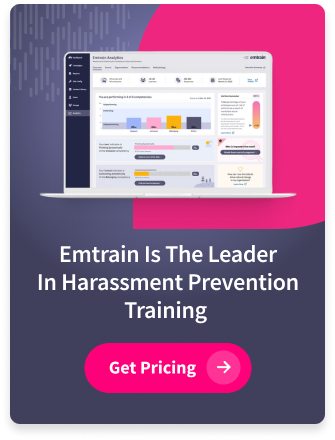 In today’s fast-paced work environments, employee safety and well-being are more important than ever. Your organization’s injury reporting process is a key part of any safety management program.
In today’s fast-paced work environments, employee safety and well-being are more important than ever. Your organization’s injury reporting process is a key part of any safety management program.
Of course, reporting injuries is critical when the injury happens. It ensures that injured employees get the immediate medical they need. But it’s also the cornerstone for preventing future incidents, and effective workplace safety procedures.
Understanding Workplace Injury Reporting
A robust injury reporting process is the linchpin of any framework for workplace safety management. It gives organizations they crucial data and insights needed to identify hazards, evaluate risks, and implement preventive measures.
By documenting and analyzing incidents, employers gain an understanding of the underlying causes and how to implement effective workplace safety procedures.
Under OSHA, reporting injuries is also often required by law. Many jurisdictions require employers to report workplace injuries to relevant authorities – and provide specific injury reporting processes and timelines. Employers that fail to follow these mandates risk fines, penalties, and legal liabilities.
Step-by-Step Guide to Reporting Injuries
Effectively reporting injuries involves a systematic and structured approach, involving the following workplace safety procedures:
-
- Immediate Response: Employees should prioritize their safety and that of others, seeking medical attention if necessary. They must also notify their supervisor, safety officer, or designated personnel to initiate the injury reporting process.
- Documentation: Employees involved in or witnessing an incident should follow workplace safety procedures and provide detailed information. They should include the date, time, location, individuals involved, and a description of the injury or event. This documentation serves as a factual record, aiding in subsequent investigations and analysis.
- Reporting Form: Many organizations use standardized injury reporting forms to streamline the injury reporting process and ensure consistency.
Employees are required to complete these forms, providing comprehensive details about the incident, injuries sustained, and any immediate actions taken. These forms may also include sections for witness statements, supervisor assessments, and recommendations for preventive measures. - Investigation: After receiving an injury report, employers must conduct a thorough investigation to determine the root cause and contributing factors.
This may involve interviewing witnesses, examining the scene of the incident, reviewing relevant policies and workplace safety procedures, and analyzing available data. The goal is to identify underlying deficiencies or hazards and implement corrective actions to prevent repeat injuries. - Corrective Action: Based on the findings of the investigation, employers must implement corrective measures to address identified deficiencies, mitigate risks and refine safety management programs.
This may include modifying equipment, delivering effective training, revising workplace safety procedures, or implementing engineering controls. Additionally, it’s important to share information about lessons learned and the organization’s commitment to safety.
The Role of Reporting Injuries
The significance of injury reporting extends far beyond mere compliance or documentation. It plays a transformative role in shaping workplace safety culture and driving continuous improvement.
-
- Prevention and Risk Reduction: By identifying and addressing hazards in a timely manner, reporting injuries helps prevent accidents and injuries from occurring.
Using data analysis and trend identification, organizations can enhance their safety management programs, implement preventive measures, such as engineering controls, administrative safeguards, or personal protective equipment (PPE), to mitigate risks and enhance workplace safety management. - Awareness and Education: Injury reporting fosters awareness and education among employees about potential hazards, safety protocols and the injury reporting process.
By actively participating in the injury reporting process, employees become more vigilant and proactive in identifying unsafe conditions or behaviors. Awareness and information empower employees to take responsibility for the well-being of themselves and their colleagues. - Accountability and Transparency: Transparent injury reporting fosters a culture of accountability, where individuals are held responsible for their actions and decisions.
Organizations demonstrate their commitment to transparency and continuous improvement by acknowledging incidents and addressing root causes. This accountability instills confidence among employees, reinforcing the belief that their concerns are taken seriously and addressed promptly. - Data-Driven Decision-Making: Reporting injuries provides organizations with valuable data and insights necessary for informed decision-making.
By analyzing trends, patterns, and near-misses, employers can identify systemic issues, prioritize resources, and implement targeted interventions to enhance workplace safety management. This data-driven approach enables organizations to allocate resources effectively, maximize impact, and continuously adapt to changing conditions.
- Prevention and Risk Reduction: By identifying and addressing hazards in a timely manner, reporting injuries helps prevent accidents and injuries from occurring.
Overcoming Challenges in Injury Reporting
While reporting injuries is essential for effective workplace safety management, it isn’t always easy. Common obstacles include:
-
- Underreporting: Fear of reprisal, stigma, or lack of trust in reporting mechanisms may deter employees from reporting or near-misses accurately
To overcome this challenge, organizations must cultivate a culture of trust, openness, and psychological safety, where employees feel empowered to report incidents without fear of retaliation. Often times, incentives, recognition programs, and peer-to-peer support initiatives can also encourage reporting and reinforce positive behaviors. - Lack of Awareness or Training: Some employees may be unaware of the importance of injury reporting or the workplace safety procedures for doing so.
To address this, organizations must invest in comprehensive training and communication initiatives to educate employees about the significance of reporting, their rights and responsibilities, and the available resources for support.
Training should be tailored to diverse audiences, considering factors such as language, literacy levels, and cultural backgrounds. - Inadequate Reporting Systems: Outdated or cumbersome reporting systems can hinder the timely and accurate reporting of injuries.
Employers must invest in user-friendly reporting platforms that facilitate easy access, streamlined data entry, and real-time notifications. Additionally, feedback mechanisms should be incorporated to solicit input from users and continuously improve system functionality and usability. - Communication Barriers: In multicultural or multilingual workplaces, language barriers may pose challenges to effective communication during the injury reporting process.
Employers should provide language assistance, translation services, or multilingual resources to ensure that all employees understand workplace safety procedures for reporting. Additionally, clear injury reporting processes and visual aids can often help overcome language barriers.
- Underreporting: Fear of reprisal, stigma, or lack of trust in reporting mechanisms may deter employees from reporting or near-misses accurately
Takeaways
Injury reporting is a cornerstone of effective workplace safety management, providing organizations with critical insights and opportunities for improvement.
Clear workplace safety procedures and fostering a culture of openness, accountability, and continuous improvement allow organizations to harness the power of reporting injuries to enhance safety management programs, prevent accidents, and protect the well-being of their employees.
Overcoming challenges associated with reporting injuries requires proactive measures, investment in resources, and a collective commitment to creating safer and healthier work environments for all.
But in the end, prioritizing injury reporting and integrating it into broader safety management programs allow organization to cultivate a culture where safety is a shared responsibility.








